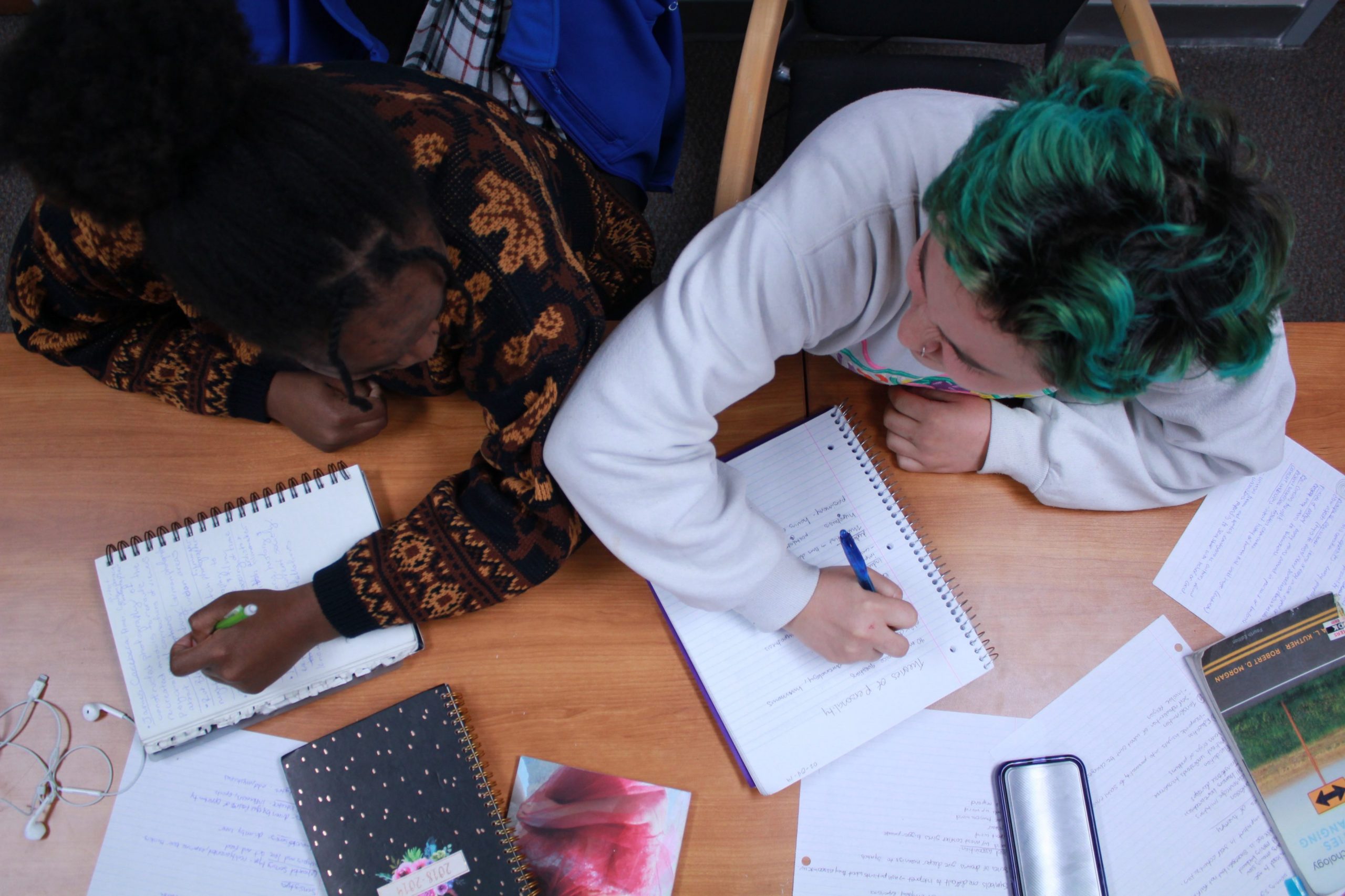
While left-handed individuals make up 10 percent of the total population, they have been forced to assimilate to a “right is right” centered world and campus through simple accommodations the majority of right-handed individuals never notice.
Living in the shadows, left-handed individuals may be spotted by subtle clues: quietly moving the computer mouse to across the keyboard to the opposite side of the table, wiping the smeared ink off their left palm and reaching over their bodies to access the fingerprint scanners guarding the library.
According to Kimberly P. Bauer, senior director of Facilities Design & Construction Services, the school orders ten percent of the desks be left-handed per industry standard, but many students still struggle to find adequate accommodations.
“It isn’t easy to get a left-handed desk,” student and fellow lefty Matty Mauldin said. “In my history of food class, there is literally one. I try and get there early so I can get it, but sometimes I don’t.”
The Institute of Handedness reports that forcing left-handed students to sit in right-handed desks is not only educational discrimination but can also cause chronic and long-term back damage — something that Mauldin is familiar with.
“The left-handed desk is a plus and needed for me. [Because] without the left-handed desk, I end up having to lean forward a lot to write my notes out,” he said. “Leaning forward hurts my back a lot.”
Dr. Rosalind Chou, associate professor of sociology at Georgia State, said that forcing left-handed students to assimilate to the social norm of right-handedness is an example of privilege.
Chou defines privilege as “invisible advantages” that increase the quality of life without conscious thought of said advantage. Instead of changing the society to include more accommodations, those outside of the dominant group are forced to assimilate.
“If society is catered and tailored to think of right-handed people as the norm, there are many ways in which the world is more accessible to those who are seen as the norm and in this case, right-handed people,” she said.
Examples of institutional right-handed privilege can be seen further than the classroom.
Around campus and throughout university buildings you may notice most toilet paper located on the right side of the stall. Computers with mice placed on the right of the keyboard. Fingerprint scanners located again, on the right. Even lab materials are right-hand centered.
Maldin’s chemistry lab required him to do a slow drip test. He had to control the flow of drip of the substance with his right hand and after failing to get the timing correctly, settled to do it with his dominant hand, leaving him in awkward positioning.
“In some labs, the equipment is catered to right-handed people, so I have to adjust myself and focus on not messing the experiment up,” he said.
But it’s not just desks. It’s programs, layouts and basic structures of everyday items.
Chikara Best is majoring in graphic design. She’s noticed some of her graphic design programs focused on the right side of the screen.
“To edit photos and videos on the computer, the programs on Microsoft have more right oriented things,” she said. “Like most of the tools are located on the right while the display screen is on the left.”
Best has also noticed that with the design of the digital camera, taking photos can also be an issue.
“All the [buttons] are right-handed so it’s not as easy to snap photos,” she said.
While something simple like the computer mouse can be moved to the other side, Chou argues that students like Best shouldn’t have to.
“It says that they are an afterthought. Their needs and accommodations aren’t first on the priority list,” she said.
And while this may seem exhausting to those who have never been forced to consider what side something may be positioned on, students like Genesis Pura have just accepted this as a way of life and learned around it.
“Pretty much anything I interact with at home and outside is right-hand so I learned to adapt to it very early on; be it taking a few steps to the right so I won’t have to reach over, prioritizing the left most seats so I get more arm space, etc,” he said. “Although it’s not that big of a deal in the grand scheme of things, being left-handed has definitely made me consider things that a right-handed person wouldn’t have to.”
And finally, take it from lefties everywhere: Please be mindful of where you stick your elbows.
“When I’m sitting in a lecture hall type classroom where there’s no desks just long tables, and someone right-handed sits to my left, sometimes they kind of assume that they can extend their elbow as far left as they can,” Pura said. “I would appreciate it if people were less aggressive with arm space.”
